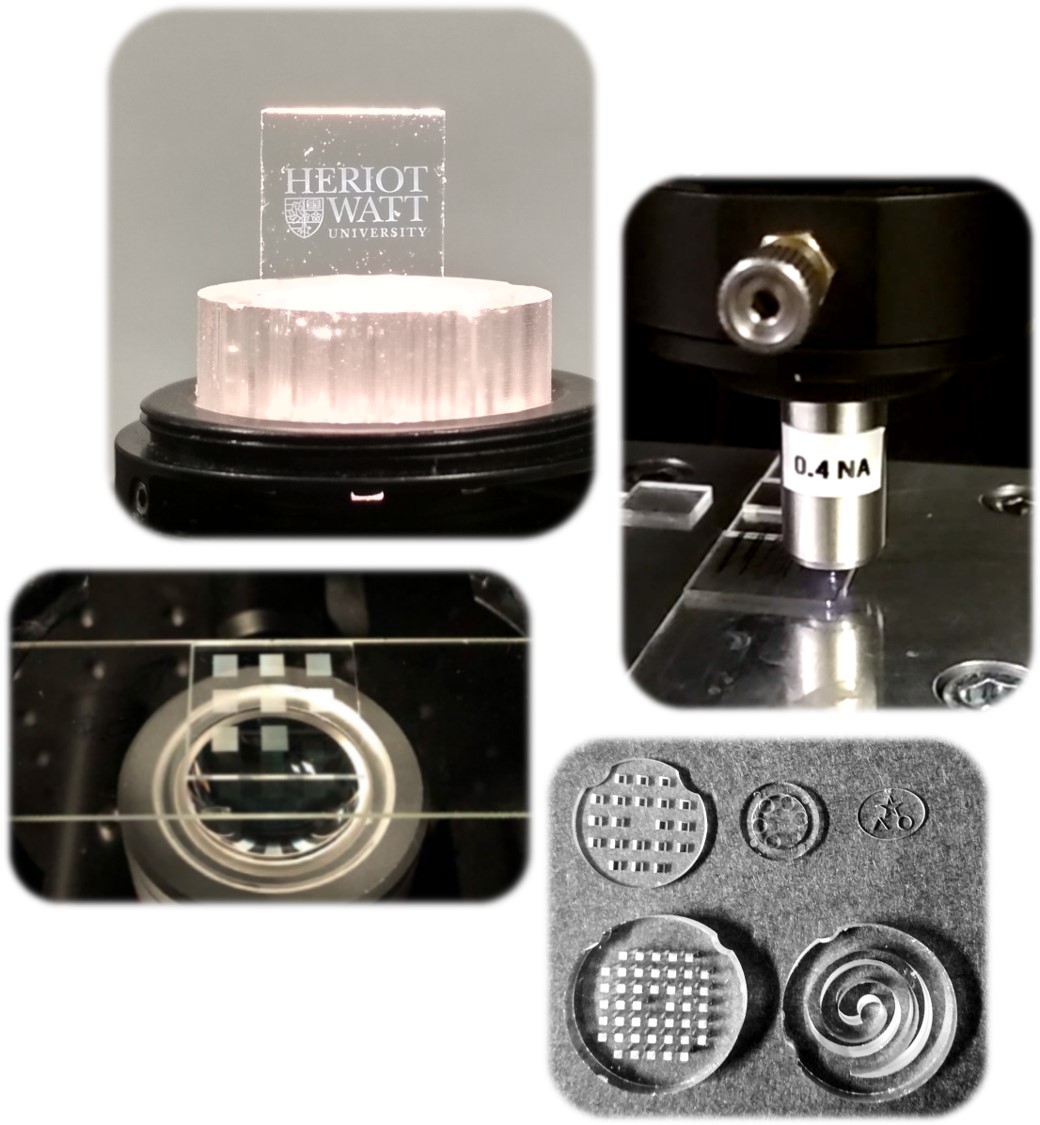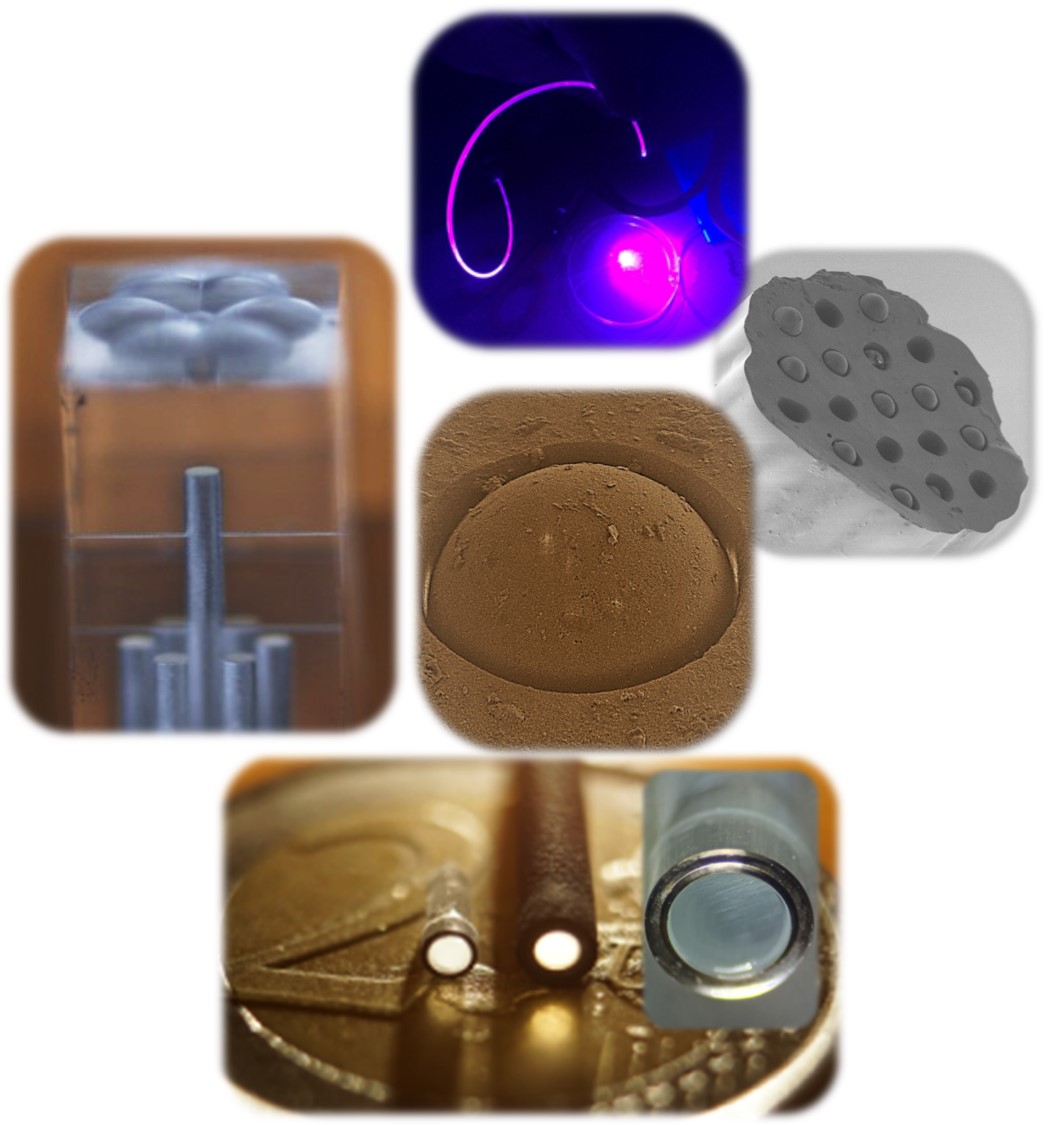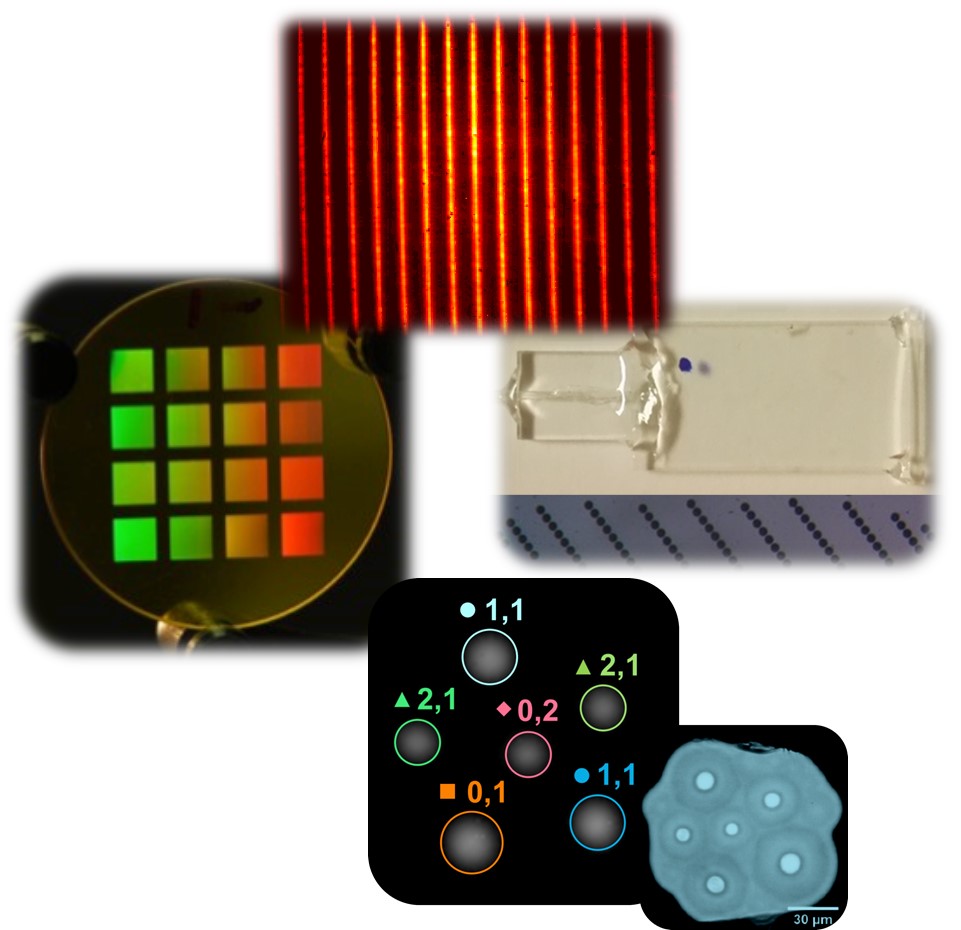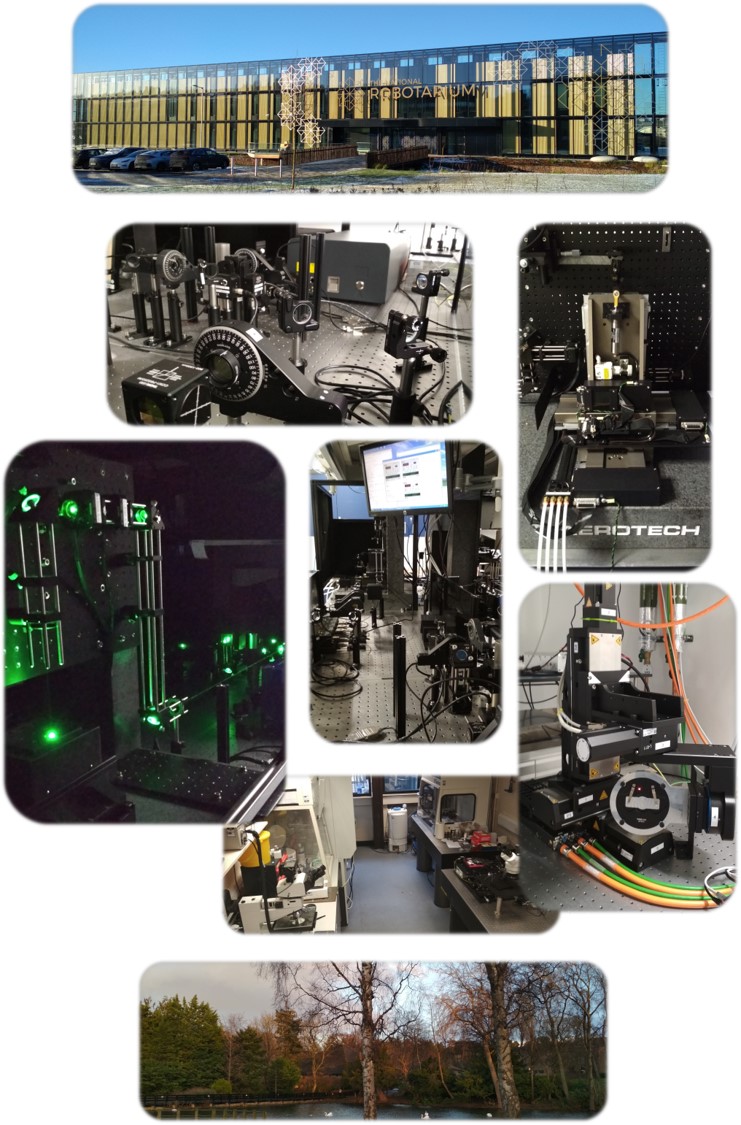State-of-the-art ultrafast laser inscription facilities

The group has a strong heritage in using ultrafast laser pulses to manufacture photonic structures such as three dimentional optical waveguides - a manufacturing technique known as ultrafast laser inscription (ULI).
Implementing a spatial-light-modulator in ULI setup allows shaping the writing-focused beam, compensating spherical aberrations, and then applying efficient light-matter interactions at any depth of the dielectric material.
When used in combination with chemical etching (FLICE), ultrafast laser inscription can also be used to manufacture components such as freeform fibre-coupled microlens, a technology we are developing for astronomical applications.
Clinical photonics

Through EPSRC, STFC, and MRC funded projects, we are developing new ways to use light for therapeutic and diagnostic applications in healthcare.
Exemplar applications include:
-
the development of fibre optic probes to interrogate disease states in the distal lung
-
the use of deep UV for treating/preventing infection
-
multicore polymer optical fiber for multipoint light emission
-
distal end-caps technology for lung endomicroscopy with polymer imaging fibres.
Astrophotonics

The field of astrophotonics aims to exploit photonic concepts and technologies to enable astronomical instruments with improved performance and lower cost.
Examples of astrophotonic technologies we are currently developping include:
-
single mode integral field units for exoplanet science
-
fibre-connectorized K-band 2-Telescope beam combiner for application at the Center for High Angular Resolution Astronomy (CHARA) array
-
fibre-coupled microlens arrays for integral field spectroscopy
The astrophotonic technologies we have developed, such as the pseudo-slit reformater and the MCIFU, have been tested on-sky at the William Herschel Telescope.
For more information on the state-of-the-art in the field of astrophotonics, see the Journal of the Optical Society of America B special issue on “Astrophotonics: introduction to the feature issue” co-edited by Prof. Thomson.
Fundamental optics

The transport of light across an array of coupled waveguides can be simulated by a Schrodinger-like equation. The similarity of the mathematics facilitates the development of optical analogues of condensed matter phenomena that are challenging to observe in the solid state.
Using our expertise in ultrafast laser waveguide writing, we have developed optical analogues of:
-
flat-band optical states
-
anomolous Floquet topological insulators
-
optical analogues of synthetic magnetics fields
Lab facilities

The PHI group ocupies several labs at the Institute of Photonics and Quantum Sciences (IPaQS) and at the recent National Robotarium in Heriot-Watt University.
We are also fortunate to have access to a wide range of device fabrication and characterisation equipment, including:
-
A LightConversion Pharos laser coupled with a spatial-light-modualtor to enable to beam shaping and aberation correction, and a MenloSystems BlueCut laser. With high-precision Aerotech 3 axis systems, these facilities ensure to PHI group a world-class equipment for ULI fabrication and FLICE
-
High power supercontinuum source from NKT Photonics with SuperK select tunable multi-line filter
-
A high-power CO2 Access Laser combined with a Physik Instrumente 5 axis system to high quality glass surface polishing applied on all FLICE fabrications,
-
A Coherent Diamont CO laser to bond fibre preform disks,
-
A range of other laser sources, including He-Cd laser, and red HeNe in visble range, and also in infrared range with for example fiber-coupled, ASE source
-
We also have a computer controlled alligment system consisting of two six axis NanoMax to precisely align and package photonics devices,
-
High accessibility to fibre proceding systems such as LZM-100 Fujikura CO2 fibre splicer, fibre cleaver, and polisher.
